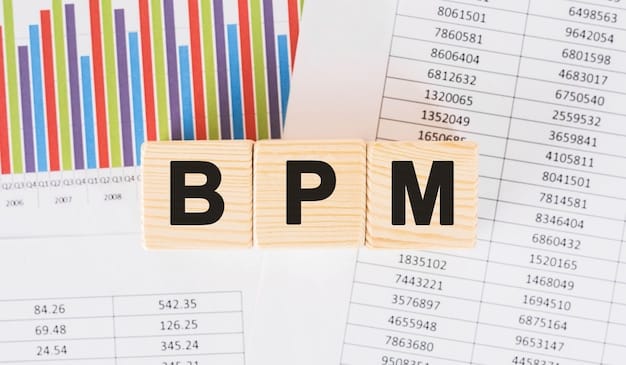Municipal Bonds in 2025: Risks, Rewards & Tax-Exempt Income

Understanding the risks and rewards of investing in municipal bonds in 2025 involves assessing factors like interest rates, credit ratings, state and local economic conditions, and potential tax benefits such as tax-exempt income, to make informed investment decisions.
Navigating the world of investments can be complex, especially when seeking tax-efficient strategies. Understanding the Risks and Rewards of Investing in Municipal Bonds in 2025: A Guide for Tax-Exempt Income provides a comprehensive overview, helping you make informed decisions about incorporating municipal bonds into your portfolio.
What are Municipal Bonds?
Municipal bonds, often referred to as “munis,” are debt securities issued by state, local, and county governments to fund public projects. Investing in these bonds can be a way to support your community while potentially earning tax-exempt income.
Before diving into the specifics of 2025, it’s vital to understand the fundamentals of municipal bonds. These bonds are essentially loans you make to government entities.
Types of Municipal Bonds
Municipal bonds come in various forms, each with its own set of characteristics and risk profiles. Understanding these different types is crucial for making informed investment decisions.
- General Obligation Bonds (GO Bonds): Backed by the full faith and credit of the issuer, typically a state or local government. These bonds are generally considered lower risk.
- Revenue Bonds: These bonds are secured by the revenue generated from a specific project, such as a toll road or a water utility.
- Private Activity Bonds: Issued to finance projects that benefit private entities, like hospitals or universities.
The type of municipal bond you choose can significantly impact the risk and return potential. Revenue bonds, for instance, might offer higher yields to compensate for the increased risk.

Municipal bonds offer investors a way to earn tax-exempt income, which can be a significant advantage, particularly for those in higher tax brackets. Understanding their types is just the beginning.
Tax Advantages of Municipal Bonds
One of the most attractive features of municipal bonds is their tax-exempt status. This means that the interest you earn is typically exempt from federal income taxes, and in some cases, state and local taxes as well.
This tax benefit can significantly enhance the overall return on your investment, especially when compared to other fixed-income securities that are fully taxable.
Federal, State, and Local Tax Exemptions
The tax advantages of municipal bonds vary depending on where you live and the issuer of the bond. Here’s a breakdown of the different levels of tax exemption:
- Federal Tax Exemption: Interest earned on most municipal bonds is exempt from federal income taxes.
- State Tax Exemption: If you purchase a bond issued by your state of residence, the interest may also be exempt from state and local income taxes.
- Triple Tax Exemption: Some bonds offer exemption from federal, state, and local taxes, providing the highest level of tax savings.
The tax benefits of municipal bonds are determined by several factors, including the issuer’s location and the investor’s state of residence. Consulting with a tax advisor is recommended to fully understand these benefits.
Understanding these tax advantages requires careful consideration of your individual tax situation and the specific characteristics of the bonds you are considering. It allows for more informed and strategic investment decisions.
Assessing the Risks of Municipal Bonds
While municipal bonds are generally considered safe investments, they are not without risk. Assessing these risks is essential for making informed decisions and protecting your capital.
Several factors can impact the value and performance of municipal bonds, including interest rate fluctuations, credit ratings, and economic conditions.

Key Risks to Consider
Before investing in municipal bonds, it’s crucial to be aware of the potential risks involved. Here are some of the primary risks to consider:
- Interest Rate Risk: The value of municipal bonds can decline as interest rates rise. This is because new bonds will offer higher yields, making existing bonds less attractive.
- Credit Risk: The risk that the issuer of the bond may default or be unable to meet its debt obligations. Credit ratings provide an indication of this risk.
- Inflation Risk: Inflation can erode the real value of fixed-income investments like municipal bonds. This is especially true for long-term bonds.
Understanding these threats is critical for assessing the overall risk profile of municipal bonds. Credit risk, in particular, warrants a deeper dive.
Assessing the risks related to municipal bonds is essential to making informed decisions. Consider these carefully to reduce the odds of financial loss.
Economic and Market Factors Influencing Municipal Bonds in 2025
The performance of municipal bonds in 2025 will be influenced by broader economic and market conditions. Monitoring these factors is crucial for anticipating potential changes and adjusting your investment strategy accordingly.
Key economic indicators, such as GDP growth, inflation rates, and interest rate policies, can all impact the municipal bond market. Political and regulatory developments can also play a significant role.
Key Economic Indicators to Watch
Staying informed about economic trends is essential for understanding the potential direction of the municipal bond market. Here are some of the key indicators to watch:
- GDP Growth: Strong economic growth can lead to increased tax revenues for state and local governments, improving their ability to repay bonds.
- Inflation Rates: Rising inflation can erode the real value of fixed-income investments, while deflation can increase their real value.
- Interest Rate Policies: Changes in interest rate policies by the Federal Reserve can impact the yields and prices of municipal bonds.
Monitoring these indicators can provide valuable insights into the potential performance of municipal bonds. It is worth noting how these influence state and local governments.
Staying abreast of these developments is essential for investors seeking to navigate the municipal bond market successfully. Be sure to analyze how policies might shift.
Strategies for Investing in Municipal Bonds in 2025
Investing in municipal bonds requires a well-thought-out strategy tailored to your individual financial goals and risk tolerance. There are several approaches you can take to build a successful municipal bond portfolio.
Whether you prefer individual bonds or bond funds, understanding the nuances of each approach is critical for making informed decisions. Diversification is always an important principle.
Individual Bonds vs. Bond Funds
When investing in municipal bonds, you have the choice of purchasing individual bonds or investing in bond funds. Each approach has its own advantages and disadvantages:
- Individual Bonds: Allow you to select specific bonds based on your criteria, such as credit rating, maturity date, and issuer.
- Bond Funds: Offer diversification by investing in a portfolio of municipal bonds. Funds are professionally managed and provide liquidity.
- ETFs: Municipal Bond ETFs offer another path to diversify, offering exposure to a basket of bonds, replicating an index.
The choice between individual bonds and bond funds depends on your investment preferences and expertise. It is worth carefully considering your overall investment goals.
Diversification is key, but one must also be aware of investment expenses and costs to ensure optimal returns. Be sure to understand your personal risk tolerance, too.
Building a Diversified Municipal Bond Portfolio
Diversification is a cornerstone of any sound investment strategy, and municipal bonds are no exception. Spreading your investments across different issuers, maturities, and types of bonds can help reduce risk and enhance returns.
A well-diversified portfolio can weather economic storms and market fluctuations more effectively than a concentrated one. Let’s talk about some strategies for effective diversification.
Strategies for Diversification
Here are some strategies you can use to build a diversified municipal bond portfolio:
- Diversify by Issuer: Invest in bonds from different states, cities, and counties to reduce the risk of being overly exposed to any one issuer.
- Diversify by Maturity Date: Spread your investments across bonds with different maturity dates to manage interest rate risk.
- Diversify by Bond Type: Include a mix of general obligation bonds, revenue bonds, and private activity bonds in your portfolio.
Diversifying your municipal bond portfolio requires due diligence and research. Always aim to spread out risk.
Considering your individual needs is vital to ensure your portfolio is truly diversified for your unique situation. Professional advice may be helpful.
| Key Point | Brief Description |
|---|---|
| 💰 Tax Advantages | Interest income is often exempt from federal and sometimes state/local taxes. |
| ⚠️ Risks | Include interest rate risk, credit risk, and inflation risk. |
| 📈 Economic Factors | GDP growth, inflation, and interest rate policies impact bond performance. |
| 📊 Diversification | Spread investments across issuers, maturities, and bond types. |
Frequently Asked Questions
▼
The primary benefit is the tax-exempt status of the interest income, which is usually exempt from federal taxes. Additionally, some bonds are exempt from state and local taxes, increasing their appeal.
▼
Key risks include interest rate risk, where bond values decline if interest rates rise; credit risk, the possibility of default; and inflation risk, which erodes the real value of the returns.
▼
Economic factors such as GDP growth, inflation rates, and Federal Reserve policies can influence the value and performance of municipal bonds by affecting interest rates and the financial health of the issuers.
▼
Individual bonds let you choose specific bonds, while bond funds offer diversification and professional management. The better option depends on your expertise, investment preference, and available capital.
▼
Diversifying means spreading your investments across bonds with different issuers, maturity dates, and types, to mitigate risk and potentially increase overall returns over time. It’s a crucial risk-management strategy.
Conclusion
In conclusion, understanding the risks and rewards of investing in municipal bonds in 2025 requires careful consideration of tax advantages, market conditions, and diversification strategies. By staying informed and tailoring your approach to your individual financial goals, you can make informed decisions about incorporating these bonds into your investment portfolio.





